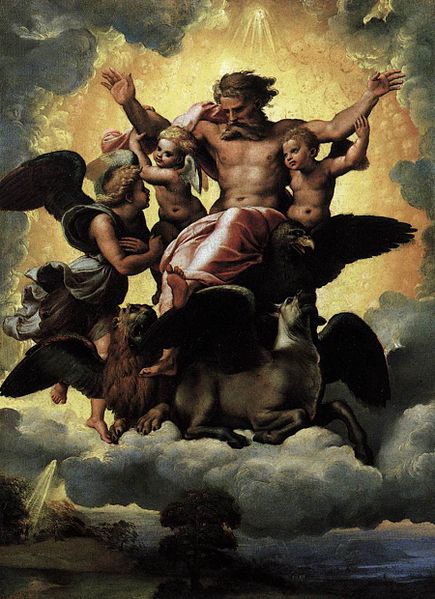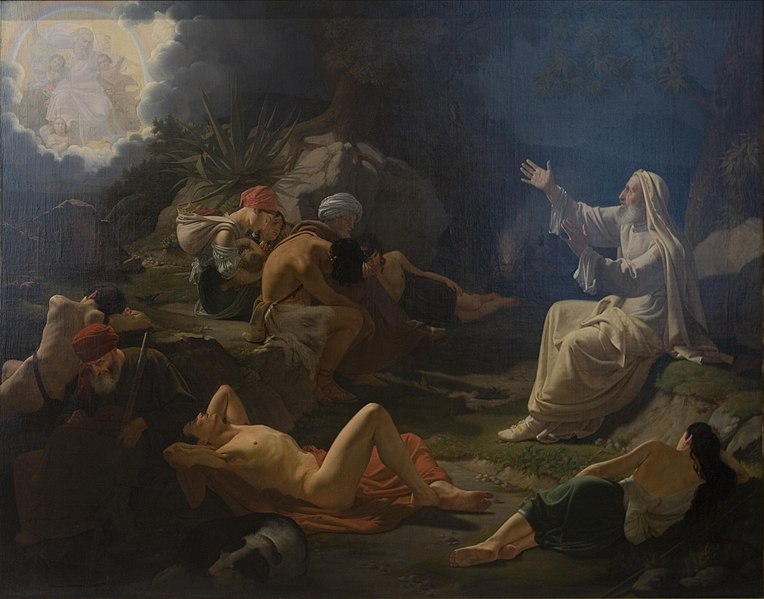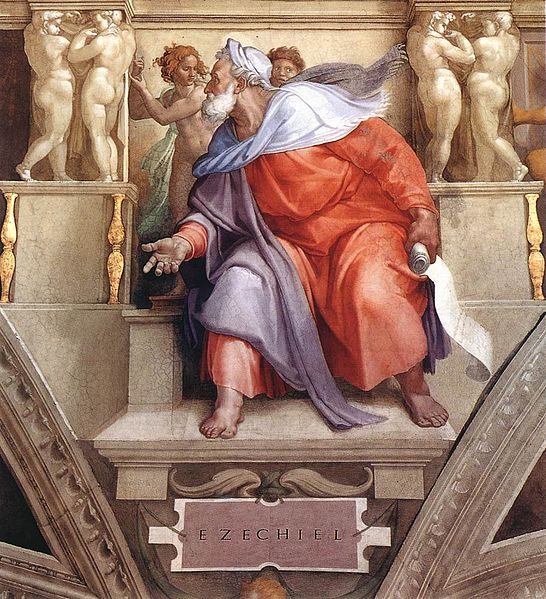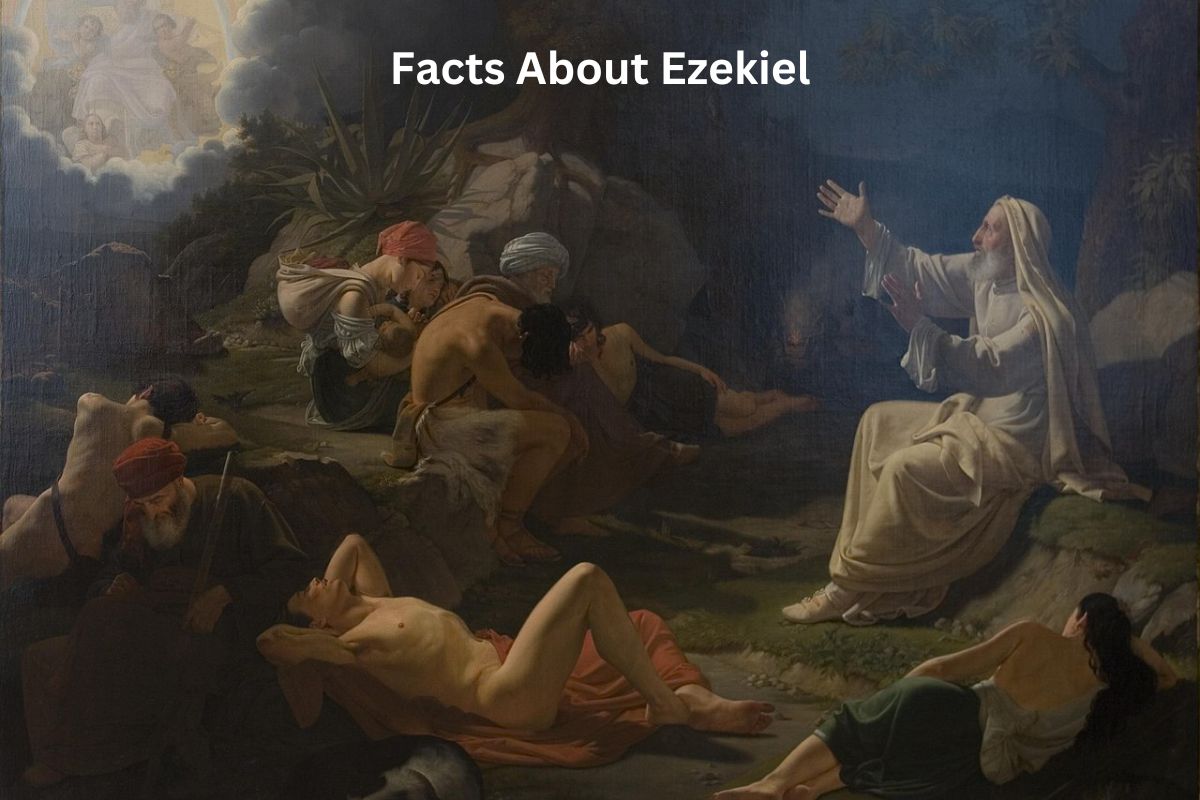Ezekiel is a significant biblical figure whose life and prophetic ministry are documented in the Old Testament of the Bible.
He lived during the tumultuous period of the Babylonian exile when the Israelite’s were taken captive to Babylon.
Ezekiel, a member of a priestly lineage, played a crucial role as a prophet, conveying divine messages through vivid visions and symbolic actions.
His prophecies encompassed themes of judgment and restoration, offering hope to the exiled Israelite’s while challenging them with stern warnings.
Ezekiel’s enduring legacy is found in the Book of Ezekiel, which continues to be a source of spiritual insight and theological reflection for both Judaism and Christianity.
Ezekiel Facts
1. Ezekiel was a biblical prophet
Ezekiel is a prominent figure in the Old Testament of the Bible. He is traditionally considered one of the Major Prophets, a group of prophets in the Hebrew Bible who authored longer books compared to the Minor Prophets.
Also Read: Jeremiah Timeline
The Book of Ezekiel, named after him, contains a collection of his prophecies, visions, and teachings. His prophetic ministry played a significant role in conveying God’s messages to the Israelite’s during a crucial period of their history.

2. He lived during the Babylonian exile
Ezekiel’s life and prophetic ministry occurred during the Babylonian exile, which is a pivotal event in the history of the Israelite’s.
In 597 BCE, the Babylonian king Nebuchadnezzar II captured Jerusalem and deported a significant portion of the Jewish population, including Ezekiel, to Babylon.
Also Read: Timeline of Ezekiel in the Bible
This exile marked a period of displacement and suffering for the Israelites, and Ezekiel’s prophecies addressed their circumstances in Babylon, providing them with spiritual guidance and a sense of hope during this challenging time.
3. He came from a priestly lineage
Ezekiel was from a priestly lineage, which means he was likely descended from a family of priests who served in the Jerusalem Temple before the Babylonian exile.
This priestly background is significant because it informed his understanding of religious rituals, laws, and traditions, and it may have influenced the way he communicated God’s messages to the people.
His background as a priest also highlights the diversity of roles and backgrounds among the biblical prophets, as not all of them were solely religious leaders or political figures; some, like Ezekiel, had a deep connection to the religious institutions of their time.
4. Symbolic Actions
Ezekiel is known for his use of symbolic actions to convey God’s messages. These actions were often unconventional and designed to capture the attention of the people and emphasize the seriousness of his prophecies.
For example, he was instructed by God to lay on his side for 390 days to symbolize the punishment that Israel would face and then 40 days for Judah (Ezekiel 4:4-8).
He also used clay models to represent the besieged city of Jerusalem and enacted other symbolic actions to illustrate the impending judgment and restoration that God revealed to him.

5. Prophecies of Judgment and Restoration:
Ezekiel’s prophecies contained a dual message of judgment and restoration. While he foretold the judgment of God upon the Israelites for their sins and rebellion, he also conveyed messages of hope and restoration.
The prophet used powerful imagery, such as the Valley of Dry Bones (Ezekiel 37:1-14), to symbolize God’s ability to bring life and renewal to a spiritually and physically dead nation.
These prophecies provided comfort to the exiled Israelites by assuring them that God had not abandoned them and that there was a future hope for their return and restoration.
6. The Valley of Dry Bones:
One of Ezekiel’s most famous visions is the Valley of Dry Bones (Ezekiel 37:1-14). In this vision, Ezekiel finds himself in a valley filled with dry, lifeless bones.
God instructs him to prophesy to the bones, and as he does, they come together, are covered with flesh, and receive the breath of life, symbolizing the restoration of the exiled Israelites.
This powerful vision serves as a metaphor for the spiritual and national renewal that God promised to bring to His people, even in the midst of their exile and despair.
7. Controversial Messages
Ezekiel’s messages were not always well-received by the exiled Israelites. His prophecies often contained stern warnings of God’s judgment due to the people’s disobedience and idolatry.
Ezekiel’s messages challenged the prevailing beliefs and practices of the exiles, which sometimes led to resistance and opposition.
Some individuals may have found his prophecies difficult to accept, especially when he foretold the destruction of Jerusalem, the sacred city of the Israelites. Nevertheless, Ezekiel remained faithful to his role as a prophet, delivering the messages God had entrusted to him.

8. A Prophet of Hope
While Ezekiel’s prophecies included messages of judgment and punishment, they also contained messages of hope and restoration. These hopeful messages emphasized God’s desire to renew His covenant with the Israelites and bring them back to the land of their ancestors.
Ezekiel’s visions, such as the Valley of Dry Bones, demonstrated God’s power to revive and rejuvenate His people, offering them a brighter future beyond the exile. Ezekiel’s role as a prophet of hope was vital in sustaining the faith and morale of the exiled Israelites.
9. Legacy:
Ezekiel’s teachings and prophecies have left a lasting legacy in both Jewish and Christian theology. The Book of Ezekiel, which contains his prophecies and visions, is considered a significant part of the Hebrew Bible and the Old Testament of the Christian Bible.
His imagery and ideas have influenced religious thought and interpretation for centuries. Ezekiel’s visions and symbolic actions, in particular, continue to be subjects of study and contemplation among scholars, theologians, and believers, providing rich material for exploring concepts of divine communication, renewal, and covenant theology.
10. Preservation in the Bible:
Ezekiel’s prophecies and teachings are preserved in the Book of Ezekiel in the Bible.
This book consists of 48 chapters, which are organized into three main sections:
- prophecies of judgment (chapters 1-24)
- prophecies against foreign nations (chapters 25-32)
- prophecies of hope and restoration (chapters 33-48)
The Book of Ezekiel is considered one of the major prophetic books in the Bible and is part of the canonical scripture for both Judaism and Christianity. It serves as a source of spiritual guidance, historical insight, and theological reflection for those who study and follow the Judeo-Christian faiths.
